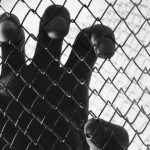In the wake of a staggering mass incarceration problem that predicts one in three Black men will be involved in the criminal justice system at some point in his lifetime (in jail, on probation, paroled, or in a halfway house) politicians and civil society organizations frequently overlook
what the so called race to incarcerate means for women and children. That is, while it is true that the United States incarcerates more men than any other nation in the world—the same should be said for women. And children are caught in the spiral too.
Three years ago there were are about 2500 young offenders serving life
sentences without the possibility of parole in the world–all in the United States. Notwithstanding the fact that in 2012, the U.S. Supreme Court ruled that mandatory life sentences without the possibility for parole were unconstitutional for children, thousands remain locked up without the possibility of release. The United Nations issued a report urging reform and noting that incarcerating a youth for life amounts to cruelty and often leads to degrading and inhumane treatment, but the U.S. has failed to act.
Just a decade ago, it was still legal for states to kill children—even though we know that nearly 1 in 9 cases involving the death penalty will amount to a serious reversible error. As Bryan Stevenson recently asked, “imagine if we had that error rate with airplanes” that every ninth flight that took off would crash?”
This election provides a pivotal time to act on mass incarceration, but also the school to prison pipeline and children in the criminal justice system. The mass incarceration of our youth is virtually forgotten about.
One chilling example of backward criminal law policies that involve children is the incarceration of sex trafficked girls. Girls as young as ten and eleven are locked behind bars in the U.S. even though they are the victims who’ve suffered from devastating crimes—rape, sexual assault, sodomy and more.
Some states even have “John Schools” that allow their victimizers to attend what amounts to traffic school for sex offenders. The men who violate these girls go back home to their families, while the girls are locked behind bars. And too frequently children become the victims of sexual assault in our jails. One man recounts his story: the place he was sent to was a “dilapidated house of horrors.” Sometimes, the abuse is inflicted by guards.
Michele Goodwin, Chancellor’s Professor at University of California, Irvine, says:
In our fifty state survey of juvenile detention, we observed racial disparities throughout the U.S. We also shine a light on female juvenile incarceration, a topic grossly overlooked and under examined in political discourse, and we examine how attitudes and practices at schools can be the gateway to incarceration or the school to prison pipeline. Indeed, the practices at far too many schools in the U.S. reflect the larger mass incarceration phenomenon.
In schools many disciplinary actions are discretionary, which sadly leaves room for subjectivity and sometimes bias. A Texas study revealed that when accounting for the same behaviors, African American kids were nearly three times more likely to receive an “out-of-school” suspension for their first offense. For Latino students, they were twice as likely as white students to be removed from school for their first offense. On the other hand, whites were more likely to receive in school suspensions. Researchers found that “seventy-five percent of the 133,719 African-American public school students (male and female) experienced involvement in the school disciplinary system.” The contrast is stark—less than 47 percent of white students experienced similar discipline.
Students with disabilities and students of color are disproportionately impacted by such practices according to the U.S. Department of Education. A study of school systems in Oregon revealed that students with special needs were four times more likely to be suspended than their counterparts.
Kicking kids out of school and locking them up for the rest of their lives does not make society safer. Indeed, we place our nation at risk of stereotyping, stigmatizing, and damaging future generations.
Goodwin continues:
Consider the case of Madisyn Moore, a six year old African American who was handcuffed and abandoned under a dark stairwell at her school, because a security mistook her candy for a stolen item. In defending his actions, the security guard said, “‘I’m teaching her a f — -g lesson. She took a piece of candy and I handcuffed her under the stairs.’” The guard was wrong and later fired; the little girl’s mother placed the special treat in her lunchbox.
In one case, elementary school students were arrested, handcuffed, and sent off to juvenile detention for not breaking up a fight off campus. In that case, arrest warrants were issued for African American kids ages 6-10 for an altercation they did not start nor participate in.
Yet, there are other troubling cases of arrests and handcuffing of little elementary school kids from Georgia where a six year old was detained because he was having a bad day—not because he brought a gun to school, harmed another child or teacher to Kentucky and even California where five year olds are just as vulnerable to having law enforcement arrest them without any call to the parents. In another case, a five year old diagnosed with Attention Deficit Hyperactivity Disorder (ADHD) was cuffed at the hands and ankles with zip ties, charged with assaulting an officer, and hauled off to a psychiatric facility in the back of a squad car. The child’s parents were not called.
Teachers have tough jobs and school administrators too. However, resolving student conduct issues through law enforcement is rarely the right answer.
As our nation turns to consider the overwhelming policy and political impacts of adult mass incarceration and its toll on families and communities, it’s worth considering how the culture of fear, which is answered by jailing and punishment trickles down to children in disparate, cruel, and inhumane ways.










